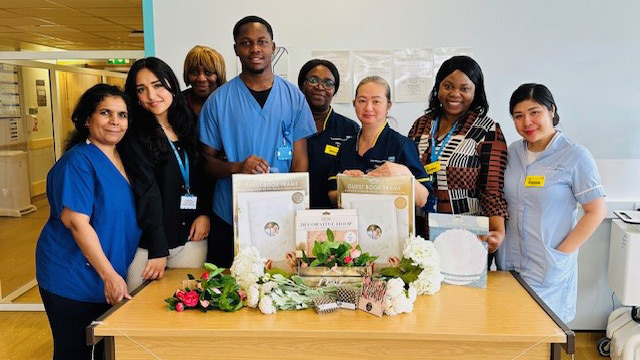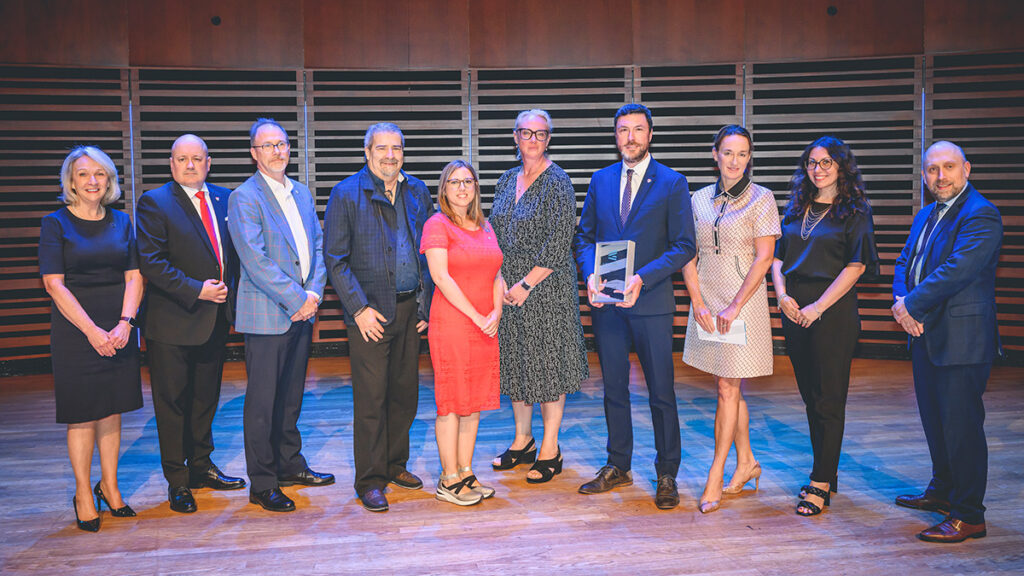December 2022
Vercity Boardroom Discussion: Why handback could be the catalyst for true collaborative working on PPPs

This article was written by Paul Jarvis and originally appeared here on Partnerships Bulletin.
Patrick Hamill, commercial director at Vercity, chaired a discussion on PPP expiry, handback and the need for greater collaboration, in a debate that built on our June boardroom conversation.
Collaboration has always been at the heart of the PPP theory, but this has not always been borne out in practice. As projects head towards contract expiry, there could be a significant opportunity to move towards a more collaborative environment in which all parties work together.
This was perhaps the key takeaway from the latest in a series of discussions aimed at informing and driving the debate around PPP contract expiry and the handback of assets to the private sector. With input from investors, advisors, FM providers and the government’s Infrastructure & Projects Authority (IPA), the event provided some real clarity around the direction of travel.
Bill Taylor, associate director at the Institute of Collaborative Working, explained that key to any collaborative effort is a shared, common goal that can be articulated by all sides at the outset. “Handback’s single purpose is the seamless transition of social infrastructure,” he said. “So the question to be asked is: why do we need to collaborate to achieve that?”
As many around the table agreed, the answer to that question is that without teams all pulling in the same direction, there is a real risk that the public sector will end up with assets that it does not necessarily want, or that are in a condition that is not fit for purpose.
This is a particular concern to many who are working on contracts where there has been a breakdown in trust and collaboration between the public and private sectors. In some cases, there is a concern that a public sector’s desire to extract as much money out of a project, via an aggressive management of the payment mechanism, could lead to a failure to deliver good outcomes when the contract expires.
“There needs to be a clear expression of what we are trying to achieve, and how, along the lines of the PPNs and Guidance Notes issued during Covid,” said Stewart Orrell, head of infrastructure asset management at InfraRed Capital Partners. “Is it about saving money in the short term, or is it about better service delivery over the long term?”
The problems in such cases have been discussed many times, with
Partnerships Bulletin having led the debate on this at the start of this year, followed by the launch of DLAPiper’s ground-breaking Project Autumn report in September that produced a series of recommendations to improve relationships.
The IPA is increasingly focused on the importance of parties working together to deliver the right results for handback. The organisation is now looking to ensure that the public authorities it advises are looking to work collaboratively with their private partners, rather than taking a more adversarial stance.
“We are all for collaboration,” said Christian Tyson, project director at the IPA.“Handback won’t work unless there is collaboration.”
To this end, those in the room recognised the importance of the new review of behaviours, being carried out by Barry White and Andrew Fraiser. This work will need to provide direction to the public sector on how it can work with its private sector partners to deliver the long-term outcomes and goals that the original contracts envisaged.
Tyson pointed out that the work the IPA has done so far on its asset condition surveys has found that in some cases, “significant work is required to meet contractual handback standards”. This suggests the breakdown of trust in some projects has been as much about a private sector failure as public sector aggression.
All around the table agreed that the breakdown in relationships, where they have happened, will be down to a range of factors, rather than one side always being to blame.“ We do recognise that in some cases, and there needs to be a reset,” said Kirsty O’Brien, director of asset management at Equitix.
Somewhat inadvertently, handback could provide that opportunity on projects that have fallen into an adversarial approach. “Handback is an opportunity to pivot towards a collaborative relationship,” said Hamill, pointing out that the focus of all parties should be aligned around the successful completion of the contract and smooth handover, so that facilities such as schools and hospitals can continue to run seamlessly once the contract ends.
There was broad agreement that the term ‘expiry’ may be giving the wrong impression, particularly to public sector partners who have not had much resource focused on their PPP deals. This is because while the contracts may expire, the assets themselves will inmost cases continue to be used for years, potentially decades, to come. Therefore, the aim needs to be more on transition of service provision than on expiry.
An approach that looks to simply squeeze money out of a contract today, regardless of what that does for the facilities and their management in the future, is therefore not appropriate. Getting all parties to recognise this will be vital to the successful handback of a PPP asset and its continued operation after the contract has expired.
What good looks like
As part of the boardroom discussion, there was a presentation on the Ministry of Defence Main Building PPP – a project that has successfully turned around its relationship with its partners through a concerted focus on collaboration. The presentation was delivered by Jon Brazier, operations director for Vercity, who is working at Modus, the special purpose vehicle set up to deliver the project.
“If people are serious about working collaboratively, building trust and respect, they need to work together: Modus, Skanska and Amey employees work in the same room and you wouldn’t be able to tell who worked for whom if you walked in – they work as one team,” he explained.
One of the areas of work that has been important to the collaborative approach since it was introduced has been a register of benefits: work done that was in the initial scope of the contract but which has been delivered more efficiently, combined with other works, or where better solutions have been identified by working with the customer to identify their needs. It also includes work not in the initial scope of the contract but which has been delivered without the public sector client having to procure the work separately.
This provides a clear and accessible way for all parties to see the benefits – which are given a monetary value – that are being delivered through the contract. So far, the register has listed over £900,000 of general benefit for all parties.
Many in the room agreed that this approach would be of huge benefit in making the case for the successful performance of PPP contracts. As Orrell pointed out: “This has been happening consistently across a lot of PPP contracts. Covid was a great example of where the private sector, rightly, delivered way beyond the original specifications of the contracts.”
O’Brien agreed, but pointed out that on the few occasions where FM companies do report on works which sit outside the contract scope, “there are many instances where this is not recognised by the contract partners”. Creating a register showing what the benefits have been – and how much the contract has saved – could be an important tool in making parties understand the value that the PPP contract is delivering.
However, while the Modus experience was received enthusiastically by those in the room, there was also an acceptance that this is a rather unique contract. The proposition, for example, that all parties work together in one room on-site in a school or hospital, is generally not realistic.
Nonetheless, there were examples that others thought could be adapted and used for their own experiences. One of the important elements on this scheme was that the Defence Infrastructure Organisation (DIO), as the public sector client, had encouraged Modus to adopt a collaborative working style.
This is something that resonated with others: the need for one organisation within the partnership to take a leadership role in advancing and delivering a collaborative environment. Sarah Channin, commercial director for PPP expiry and lifecycle at Equans, underlined this when discussing a project she had worked on that had also seen a turnaround in relationships as a result of a collaborative drive.
“People are prepared to put in the effort up front on the understanding that they are trying to agree on something as a group,” she explained. “The fact that everyone recognises that is the starting point to get to collaborative working.”
Those in the room suggested that this is where the IPA’s review will come in. They are keen for the review and its outcomes – and recommendations – to facilitate the sometimes difficult discussions that partners will have to have to move from an adversarial position into one of collaboration.
Handback could offer the perfect reason for parties to bury their hatchets and start working more closely together with a renewed common aim – potentially getting back to the kind of relationships many of them will have had when first all working together on the common aim of building a new facility in the first place.
Timing, and sympathetic understanding on both sides, will be important. In this context, a number of participants highlighted the difficulties facing hospitals at present. With some bursting at the seams and struggling to cope with long backlogs and waiting times caused in part by the pandemic, allowing private partners to carry out surveys and other works – for example in operating theatres, meaning treatment would have to be postponed- is a long way down the priority list.
However, as some in the room pointed out, if such works can be linked to ensuring good safety standards, it may be possible to engender good will among clinicians by properly explaining the reasons for the work.
“Collaborative working is something that lots of people talk about but what it looks like in practice is still not always clear,” Hamill said at the outset of the discussion. If handback is to be a success, that will have to change. This debate suggests that the industry is already travelling that road.
Related Articles
The lessons learned from this experience feed into our work on Project Exit, led by Commercial Director Patrick Hamill.




